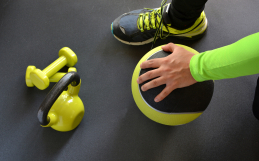Spring is here! That also means summer is on the horizon. With summer comes beach season, and we all want to feel our best in our bathing suits. Sprints can help you get that beach body.
The Problem
Steady state cardio is great for burning calories but workouts can take a long time and as you progress you need to increase the intensity or duration to continue seeing changes. Also, most people want to look lean not just skinny. Think of the last long distance runner you saw, do they have much muscle on them? This is because energy pathways taken to accomplish long bouts of cardio tend to break down muscle for energy. Not only does muscle give more energy, getting rid of it makes the body use less energy to keep it in motion. Steady cardio may be great to develop of baseline of cardiovascular endurance, but will not help you keep precious muscle in the long run (pun intended).
The Solution
Sprinting workouts burn less calories but do so in a condensed period of time with an all-out effort. While the calories burn during the workout may be less, recovering from the workout will burn more overall calories thanks to EPOC (Excessive Post Exercise Oxygen Consumption). EPOC is the process the body goes through to return to a resting state after exercise. The combination of the workout and EPOC will ultimately burn more calories. EPOC is mainly present after intense anaerobic activity….like sprinting. Not to mention sprinting can complement a resistance training program very well because it helps preserve precious muscle tissue. Hence why sprinters tend to be pretty muscular.
If your goal is general fat loss and muscle building, stick with sprinting. If you are a beginner, you may not have the endurance for an intense cardio session. At first, sticking to steady cardio is great to build a base of endurance, after which you would switch to sprinting.





